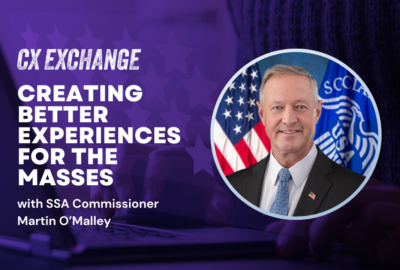Hubbard Radio Washington DC, LLC. All rights reserved. This website is not intended for users located within the European Economic Area.
On Air: Federal News Network
Trending:
MSPB clears up a few workforce misperceptions
A new report from the Merit Systems Protection Board clears up some misperceptions about due process and the protections federal employees have when facing adve...
wfedstaff | June 4, 2015 8:19 pm
Federal employees can be fired after all. Who knew?
Actually, a lot of people still think it’s close to impossible to fire a federal employee, but that’s just one of the misperceptions the Merit Systems Protection Board is trying to debunk with its new report, “What is Due Process in Federal Civil Service Employment?” 
Under the Constitution, the government can’t deprive a citizen of life, liberty or property. A government employee has a property interest in keeping his or her job, so the government can only remove that employee for just cause and not some arbitrary reason. So, the government must follow “due process”, a series of steps when it seeks to remove a public employee. These steps include giving the employee an opportunity prior to removal to know the charges he or she faces and the chance to present a defense. The system also guarantees that the employee can appeal a removal decision before an impartial adjudicator.
“Due process is available for the whistleblower, the employee who belongs to the ‘wrong’ political party, the reservist whose periods of military service are inconvenient to the boss, the scapegoat, and the person who has been misjudged based on faulty information,” MSPB Chairwoman Susan Tsui Grundmann wrote in the report. “Due process is a constitutional requirement and a small price to pay to ensure the American people receive a merit based civil service rather than a corrupt spoils system.”
Grundmann told Federal Drive with Tom Temin that although MSPB has been working on the report for more than a year, it’s quite timely considering some of the questions being raised in Congress about being able do remove federal employees for cause.
“The report really explains what processes are due according to case law, rules, regulations which are granted in the Constitution,” she said. “Regardless of what you might read in the press or even hear some elected officials say, that the process that is due is 30 days advance written notice of a personnel action and opportunity to respond, nothing more and nothing less.”
In the case of an employee that the agency suspects may have committed a crime that could result in jail time, due process is seven day advanced written notice with an opportunity to respond.
“Due process refers to the constitutional requirement that a tenured public employee, whether he or she is state, local or federal, that this person is entitled to advance written notice of an adverse action and the right to respond, as well as a meaningful review of that action after it has been carried out, whether that’s through us, through arbitration or through some other means,” Grundmann said. “The Supreme Court, yes, has held repeatedly that when the law provides that public employee can be only removed for cause, and that is a constitutional due process requirement. And because it is due process, it is grounded in the Constitution. It is, as we say in the report, ‘Not just instructive, it is instruction.'”
She added that constitutional due process does not require that employees engaging in misconduct or performing poorly be allowed continued federal employment. Nor does it prohibit an agency official from taking action within the confines of the law.
Last year, Congress passed a law restricting the rights of members of the Senior Executive Service in the Veterans Affairs Department to appeal removals to the MSPB. New legislation introduced in both the House and Senate this year would extend those restrictions to the entire VA.
“Under statute, a tenured federal employee can only be removed for cause currently,” Grundmann said. “As long as that is the case for cause, Congress cannot legislate due process rights away through some other means.”
The federal employee’s right to due process grew out of reforms, laws and legal decisions stretching back over a century.
“The system remains imperfect, but the current statutes, containing a pretermination opportunity to respond, coupled with a post-termination review of agency decisions, have enabled the Government to provide the public with a merit-based civil service with due process under the law,” the MSPB report said in it’s conclusion. “Merit-based actions are required for an effective and efficient civil service. Due process is required to ensure that: (1) merit is truly the basis of the system; and (2) the system comports with the requirements of the U.S. Constitution.”
Despite all of the legislation and the many court decisions that have helped to refine the due process protections, many misperceptions about how the civil service operates remain. The MSPB report debunks nine of the most common misperceptions.
| PERCEPTION | REALITY |
| It’s impossible to fire a federal employee. | More than 77,000 full-time, permanent feds were discharged between Fiscal Year 2000-2014 because of performance and/or conduct reviews. |
| In the private sector, no legal barriers exist to firing an employee. | Many of the laws that apply to the removal of federal employees apply to the private sector as well. There are other laws that allow private sector employees to pursue litigation, such as the Civil Rights Act of 1964 and the Uniformed Services Employment and Reemployment Rights Act of 1994. |
| Agencies are required to pay an employee who has been removed until any appeal is resolved. | Once an employee is removed, he or she does not continue to be paid or receive backpay. If the action for removal proves to be unwarranted and the employee is reinstated, the employee will receive back pay. |
| In Title 5 adverse actions, agency leaders don’t have the authority to act as proposing or deciding officials. | The agency is empowered by Title 5 to take an adverse action. Agency leadership can choose to delegate the proposal or decision authority to lower levels; however, once that delegation is named, the agency can’t interfere with the decision-making process. “But, prior to the assigned decision-maker’s involvement in a particular case, current statutes permit delegations to be abandoned or modified by the agency at will,” the MSPB report said. |
| An agency cannot fire an employee who is suspected of a crime for the same underlying conduct until the criminal case is resolved. | The agency does not have to wait for a criminal matter to be resolved before removing the accused employee. If the criminal charges are filed and the employee appeals the removal to the MSPB, the MSPB may stay its proceedings until after the charges are resolved. In that event, the employee is still considered removed and does not receive pay during that period. |
| The appeals process delays the removal of a member of the Senior Executive Service (SES). | An SES employee removed for “misconduct, neglect of duty, malfeasance, or failure to accept a directed reassignment or to accompany a position in a transfer of function” may appeal this action to the MSPB. But the appeal can’t be filed until after the removal has occurred.
An SES employee removed for “less than fully successful executive performance” is entitled to an informal hearing by the MSPB. “The request for the hearing may be filed before the removal action, but, the law specifically states that the removal need not be delayed pending a hearing,” the report said. |
| If an agency proposes a suspension, it can’t later propose a more serious action if it learns that the situation is more serious than it first believed. | An agency is allowed to withdraw a notice of proposed suspension. It can then file a notice of proposed removal as a replacement action. |
| If an agency accidentally fails to provide an employee involved in an adverse action process with all of his or her constitutional rights, the agency loses the right to take the adverse action. | An agency is allowed to take action provided it corrects the procedural problem. “If an action takes effect before the procedural issue is identified, and the action is reversed by MSPB on constitutional grounds, then the agency is free to take the action again, this time properly following all the rules,” the MSPB report said. |
| Compared to non-supervisors, supervisors are rarely punished. | An analysis of appealable adverse action data shows that supervisors are just as likely to face adverse action compared to non- supervisors of similar seniority, age and grade. |
RELATED STORIES:
Senate bill doubles spending on veterans’ health
Copyright © 2024 Federal News Network. All rights reserved. This website is not intended for users located within the European Economic Area.
Michael O'Connell
Michael O’Connell is senior digital editor of Federal News Network optimizing content for the best user experience. Follow @moconnellWFED
Follow @moconnellWFED
Foreign Service plans to rein in robust hiring efforts, following recent budget cuts
CX Exchange 2024: SSA’s Martin O’Malley on creating better experiences for the masses
Related Topics





